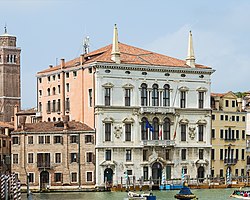
Balbi (Known also as Balbis,Balby, Balbus, Valbi or Valvis) is the surname of the ancient noble Roman Family of Balbi where after the fall of the Western part of the Roman Empire and during the Middle Ages expanded in Venice, Genoa, Constantinople, Greece, Spain, Germany, Malta and other places. Balbi is one of the few surnames that has remained unchanged over the centuries and was one of the most famous prominent and wealthy families in Italy. Members of the Balbi family held high rank positions and noble titles such as Patrician, Senators, Dukes, Doge, Barons, Marchese, Lords e.t.c in the Maritime Republics of Venice and Genoa, the Eastern Roman and Holy Roman Empire of the German Nation, engaged in piracy, maritime trade, stock market and war activities where acquired wealth and power. Later in history many Balbi's participated in historical events such as revolutions, battles or served as Generals, Members of Parliament and Prime Ministers in many countries. [1]
